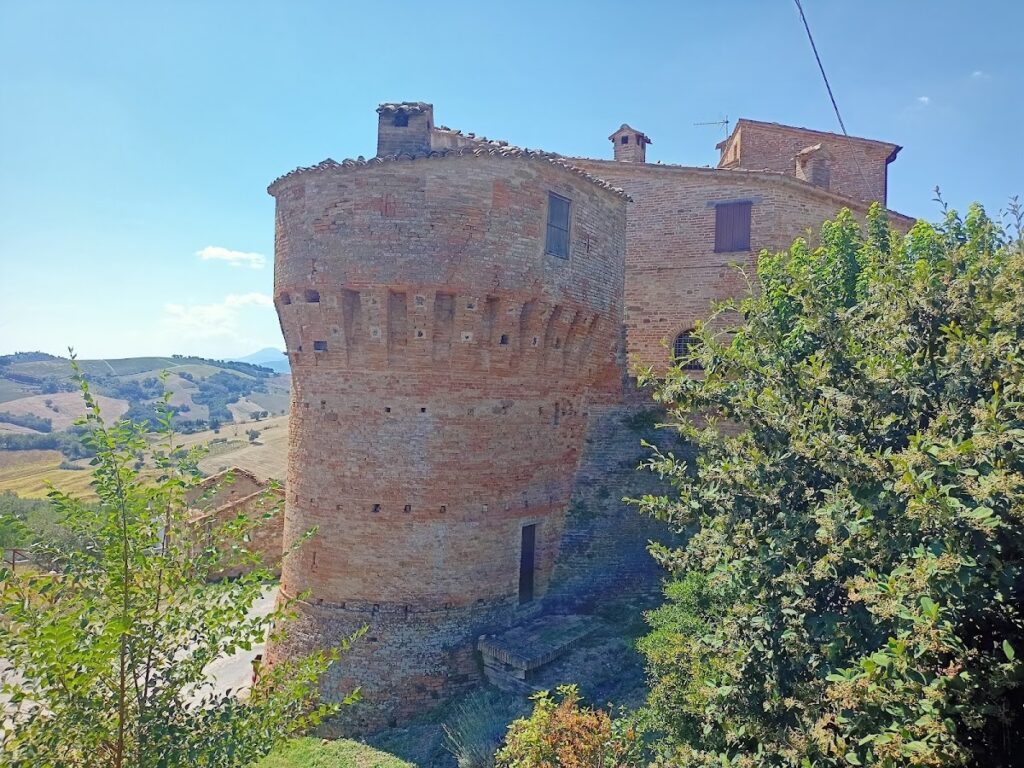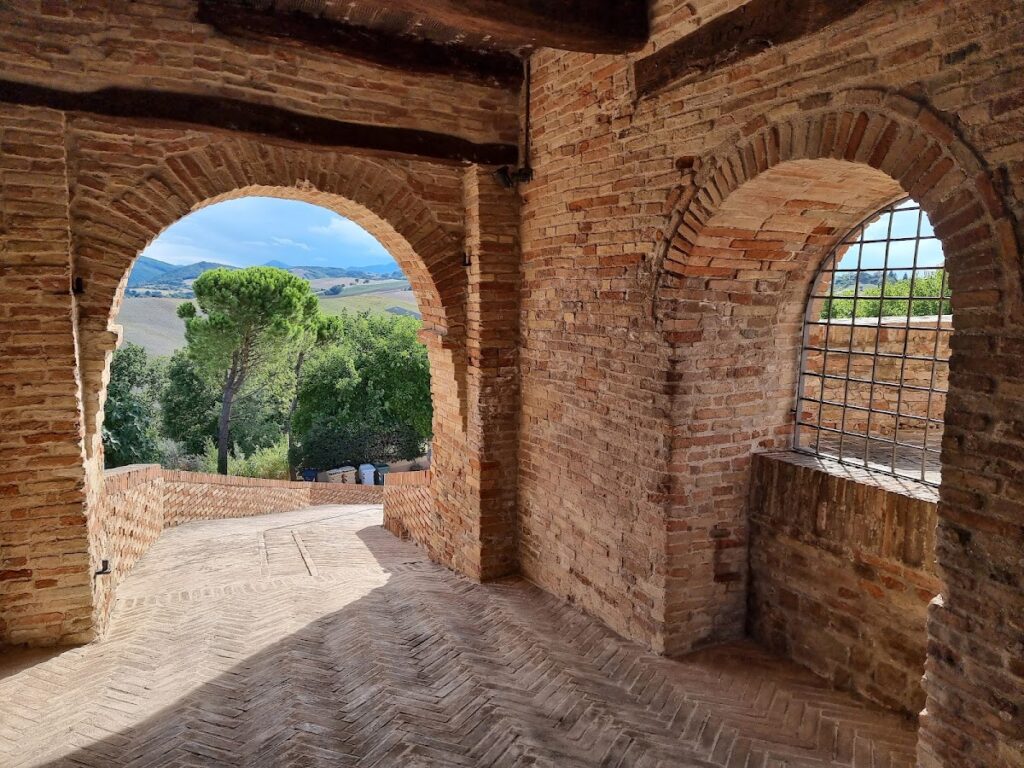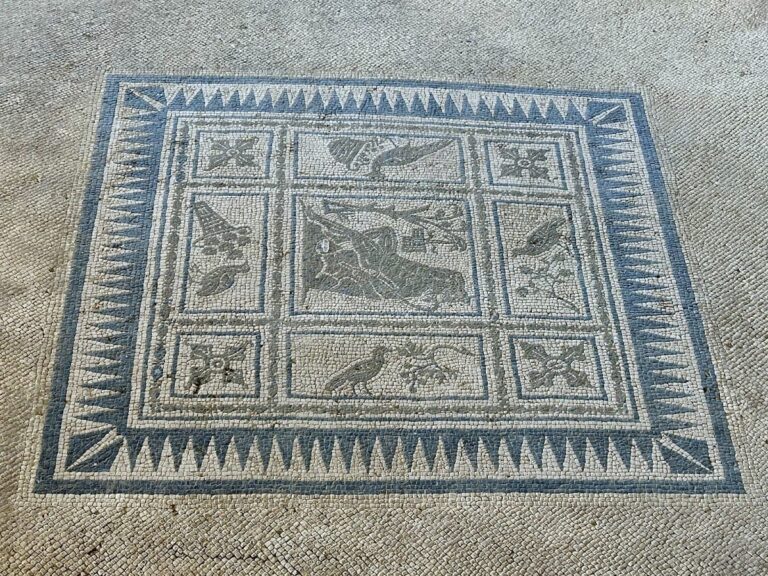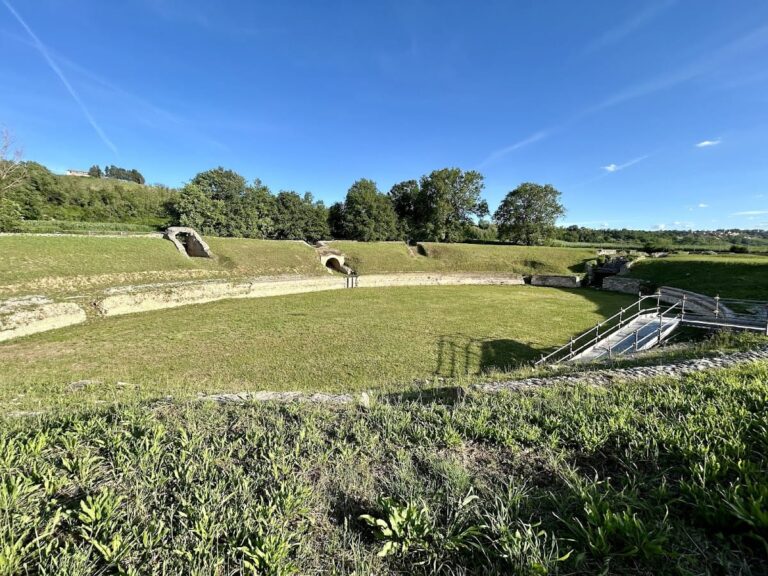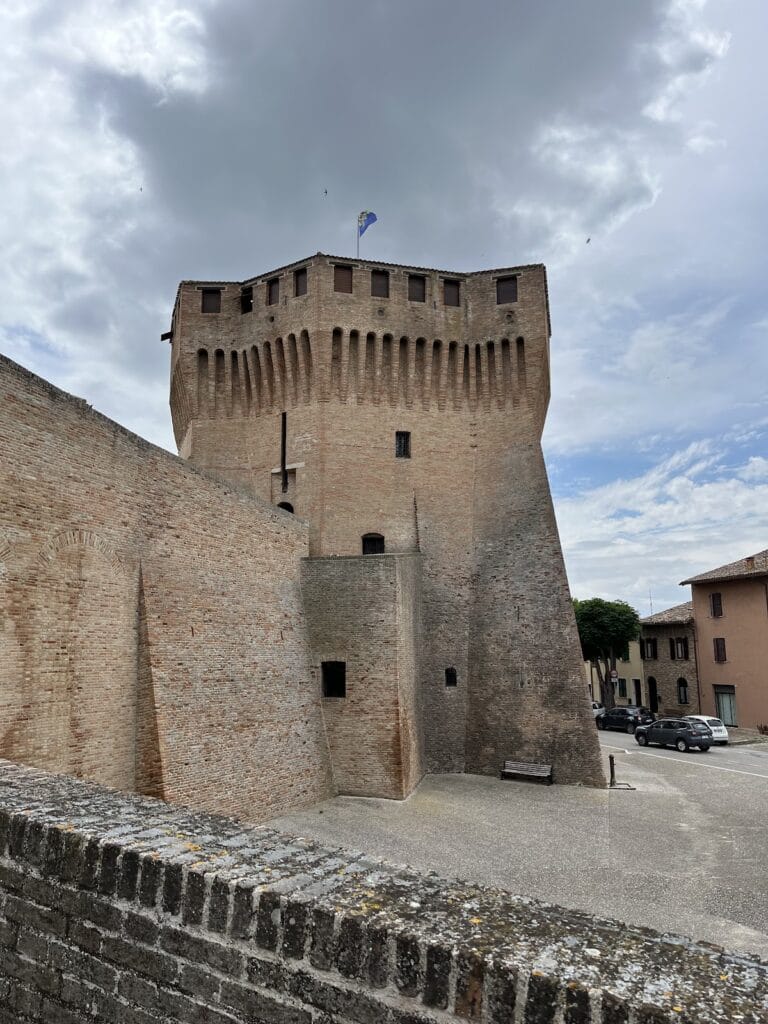Loretello Castle: A Historic Fortress in Arcevia, Italy
Visitor Information
Google Rating: 4.6
Popularity: Low
Google Maps: View on Google Maps
Official Website: consorzioloretello.com
Country: Italy
Civilization: Unclassified
Remains: Military
History
Loretello Castle is located in the municipality of Arcevia, Italy. It was originally established by monks from the Fonte Avellana monastery in 1072, during a period when religious communities often took an active role in fortifying and administering territories. The castle’s construction coincided with that of the nearby church of Sant’Andrea, reflecting the monks’ influence in the area.
In its early years, the castle was under the control of the Fonte Avellana monastery. In 1159, a conflict arose over ownership between the monastery and the diocese of Fossombrone. This dispute was resolved in 1185 by a commission of five cardinals appointed by the Pope, which resulted in the castle’s possession being divided equally between the two authorities.
By the mid-13th century, specifically in 1255, control of Loretello Castle shifted to the town of Arcevia. Arcevia compensated the diocese of Fossombrone for its share of the castle. Over the following decades, the settlement around the castle grew more closely tied to Arcevia, with thirty-three families swearing loyalty to the town by 1273. This allegiance was formalized in 1289 through an official act signed by the rector of the Marca, cementing Arcevia’s definitive control.
Throughout its history, the castle endured frequent assaults from forces hostile to Arcevia, which contributed to its gradual decline and eventual abandonment by many residents. The structure visible today reflects significant expansions carried out during the 14th and 15th centuries, transforming the castle’s size and defenses. In the 18th century, after the castle no longer served a military purpose, a three-arched bridge was added as part of its adaptation for civilian use.
Administratively, Loretello Castle was governed by a “Council of the Castle,” which managed local affairs, while a captain was responsible for justice and maintaining security. Following the unification of Italy, all administrative responsibilities were transferred to the town of Arcevia, ending the castle’s role as an independent center of governance.
Remains
Loretello Castle is situated atop a hill approximately 300 meters above sea level near the border between Arcevia and San Lorenzo in Campo. The castle’s layout features external walls that have remained intact sufficiently to be walkable today. These walls include covered walkways, which would have allowed defenders to move protected along the perimeter, as well as ravelins—triangular fortifications designed to provide additional defense in front of the main walls. The entrance area still shows the gate structure linked to the former drawbridge, which is no longer present.
Among the surviving towers, two prominent structures stand out. The first is known as the Torre della Guardia, a three-story watchtower connected to nearby buildings by a tunnel. Its angled design was a deliberate architectural choice meant to better absorb and deflect attacks, such as bombardments, demonstrating the military engineering of the later medieval period.
The second is the Prison Tower, which is six stories tall and features narrow arrow slits that allowed defenders to observe and shoot at attackers while minimizing exposure. Its battlements are of the Ghibelline style, recognizable by their swallowtail or notched shape, which was a common defensive motif in northern and central Italy during the Middle Ages. This tower historically served as a prison but was inhabited by private residents until recent times.
Within the castle’s walls, there remains a small inhabited settlement, indicating that the site was not only a fortress but also a living community. The three-arched bridge built in the 18th century marks the castle’s transition from a military fortification to a structure adapted for civilian use, enhancing access to the interior. The bridge remains a notable example of the castle’s evolving function over time.
Together, these features illustrate Loretello Castle’s development from a monastic stronghold to a feudal fortress, and finally to a civilian settlement with well-preserved defensive elements reflecting several centuries of architectural and historical changes.

